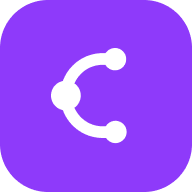How to Align Product and Engineering Teams Effectively
Learn practical strategies to align product and engineering teams, from shared objectives to collaborative workflows. Improve cross-functional collaboration and drive better product outcomes.
Why Product and Engineering Alignment Matters
When product and engineering teams work in silos, companies face delayed releases, misaligned priorities, and frustrated teams. Product teams focus on the why behind user needs, while engineering teams build the actual product. Without alignment, these complementary perspectives can create friction instead of synergy.
Research shows that cross-functional teams with engineers, product specialists, and UX specialists working together achieve better project ownership and drive initiatives to successful completion. The challenge arises when team members frequently switch between projects, disrupting continuity and shared understanding.
Establish Clear Shared Objectives
The foundation of alignment begins with shared goals and success metrics. When CloudZero forms product development teams, they immediately define project objectives and determine how to measure success. This clarity ensures everyone understands what they're working toward and why it matters.
Consider implementing OKRs (Objectives and Key Results) that both teams contribute to and are accountable for. These larger planning cycles become the mechanism where teams commit to goals that align with organizational priorities. The product backlog serves as the source for projects that feed into these goal commitments, creating a clear line of sight from individual tasks to strategic objectives.
Create Stable Cross-Functional Teams
Team stability significantly impacts alignment effectiveness. It's extremely difficult to align product development teams if members frequently switch in and out of different teams and projects at short notice. Consistent team composition allows members to develop shared context, trust, and efficient working patterns.
When forming teams, ensure you have the right people in the right roles with the right expectations set. Align role descriptions across peers to minimize confusion about responsibilities and decision-making authority. This clarity prevents the common pitfall where team members align themselves with their management structure as their primary identity rather than their business objectives.
Implement Collaborative Planning Processes
An organized, prioritized product backlog is one of the most important aspects of a good planning process and high-functioning team. The backlog serves dual purposes: as the immediate work queue and as the foundation for larger goal commitments, roadmap development, and resource planning.
Regular planning sessions where both teams contribute to backlog refinement ensure engineering insights about technical feasibility and effort inform product priorities. This collaborative approach helps set realistic goals for individual engineers while giving product teams accurate visibility into project timelines and resource requirements.
Foster Mutual Understanding and Respect
Alignment requires more than just processes—it demands cultural shifts. Product teams must understand engineering constraints and technical debt, while engineering teams need to appreciate user needs and business objectives. Regular knowledge sharing sessions, joint customer interviews, and transparent communication channels bridge these understanding gaps.
Both teams must understand each other's needs and work toward common goals. When conflicts arise, focus on the shared objective rather than departmental priorities. This mindset shift transforms potential friction into productive problem-solving.
Use Visual Tools to Enhance Collaboration
Visual frameworks like mind maps can dramatically improve cross-team alignment by making complex relationships and dependencies visible. At ClipMind, we've seen how visual thinking tools help product and engineering teams map user journeys, technical architectures, and project dependencies in ways that text-based documents cannot capture.
Consider using our AI SWOT Analyzer to identify alignment strengths and weaknesses, or our Project Planner to visualize timelines and resource allocation. These tools create shared artifacts that both teams can reference throughout the development lifecycle.
Measure and Iterate on Alignment
Alignment isn't a one-time achievement but an ongoing process. Establish regular checkpoints to assess how well teams are collaborating and adjust approaches as needed. Track metrics like cycle time, deployment frequency, and customer satisfaction to gauge whether alignment improvements are translating to better outcomes.
Remember that once you've smoothed out your product development team's workflow, you can incorporate additional dimensions like cost-efficiency into project goals. Continuous improvement should be built into your alignment strategy, with both teams participating in retrospectives and process refinements.
Conclusion
Product and engineering alignment transforms potential conflict into competitive advantage. By establishing shared objectives, creating stable teams, implementing collaborative processes, fostering mutual understanding, and using visual tools, organizations can bridge the traditional divide between these critical functions. The result is faster delivery of higher-quality products that better serve customer needs while respecting technical constraints.
 ClipMind
ClipMind